
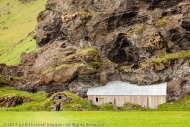
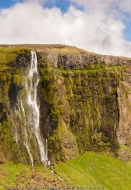
It seems that in the early 1900’s, French-Canadian fur trappers working in the region of what is now Badlands National Park in South Dakota called the area “les mauvais terres pour traverse,” or “bad lands to travel through.” Apparently they hadn’t been to Death Valley yet.
The Lakota people are credited with first calling this place “mako sica” or “land bad.” due to the extreme temperatures, lack of water, and rugged terrain.
Badlands in general are areas of soft sedimentary rock and clay-rich soil that has been eroded unevenly by wind and water, resulting in steep slopes and minimal vegetation. Badlands are a good place to find canyons, ravines, gullies, buttes, mesas, and hoodoos, as well as colorful layers that can range from dark black/blue coal to bright red.
Badlands can be found all over the world, but on my recent visit to New England I drove through the badlands of North and South Dakota.
On the trip east I followed I-94, a more northerly route that passes through North Dakota and central Minnesota. On the second night of the trip I spent the night camping in the badlands of Theodore Roosevelt National Park in western North Dakota so that I would have an opportunity to get some images while there.
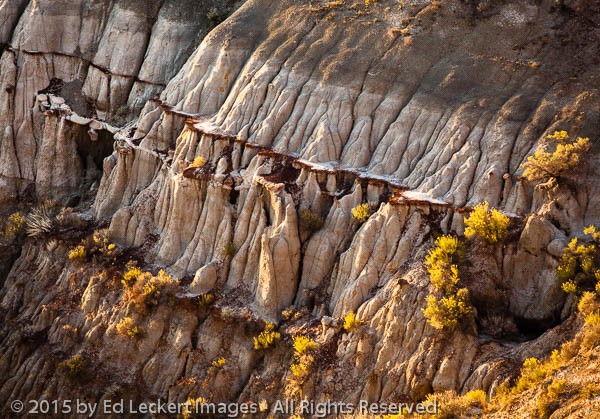
Erosion has exposed many layers of sedimentary rock, in Theodore Roosevelt National Park, North Dakota.
The park is named after President Roosevelt to honor his influence of conservation policy while in office. This location was chosen because in his early days, Teddy came to the Dakota Territory to hunt bison and later decided to purchase a ranch and raise cattle here. After losing his wife, Alice, and his mother on the same day, he decided to spend more time here rather than his home back east. The park contains the site of his Elkhorn Ranch, of which he wrote fondly and called his “home ranch”. He later claimed that “I would not have been president had it not been for my experience in North Dakota.”
Darkness fell way before I was ready to crawl into the sleeping bag, so I was wandering around the campground looking at the stars when I came across the registration cabin near the entrance. How often do you see a phone booth these days?
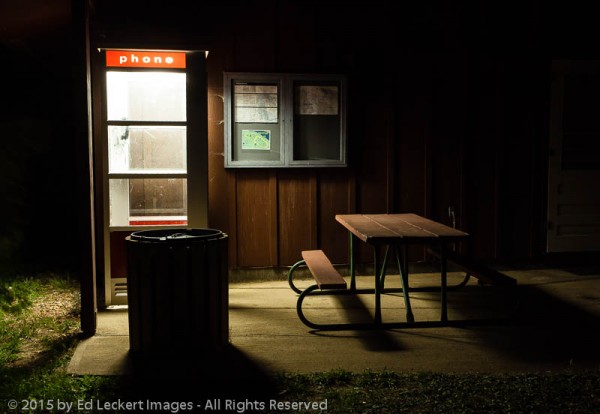
A lonely phone booth lights the otherwise dark campground registration building, in Theodore Roosevelt National Park, North Dakota.
On my return trip I took the more southerly route of I-90 through South Dakota, passing through Badlands National Park. I had never visited any badlands before this trip, so I only had a vague idea of what to expect based on photographs I had seen. There was only limited time to explore these rather large parks, but from what I was able to see, Badlands National Park in South Dakota has areas of much less vegetation than Theodore Roosevelt National Park in North Dakota, giving it a more barren and wild look. As a photographer, I found it more interesting as a result.
I also camped in Badlands National Park, and this proximity to the badlands made it easy to wander out after dark and try to compose some Milky Way images against the features there. My headlamp served as the light source to light-paint the hills in this image.
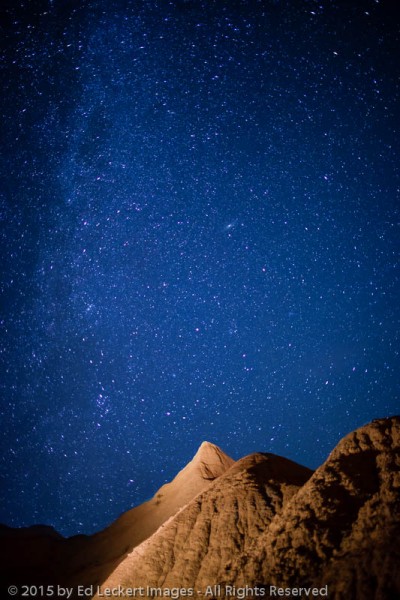
The Milky Way stretches across the sky over Badlands National Park, South Dakota. Because of the orientation of the earth during autumn, the Milky Way is not as prominent in the Northern Hemisphere as in the summer.
The next morning I was happy to see some puffy clouds in the sky to work with in my sunrise images. After all, a pure blue sky isn’t as bad as a gray sky, but it does get boring pretty quickly. Puffy clouds are my favorite!
Near the entrance to the park is the small town of Interior, South Dakota, population just under 100. It’s a good place grab a bite to eat at the local bar, and if things get out of hand, well, they have that covered, too!

Love the phonebooth shot.
Thanks, Suz!